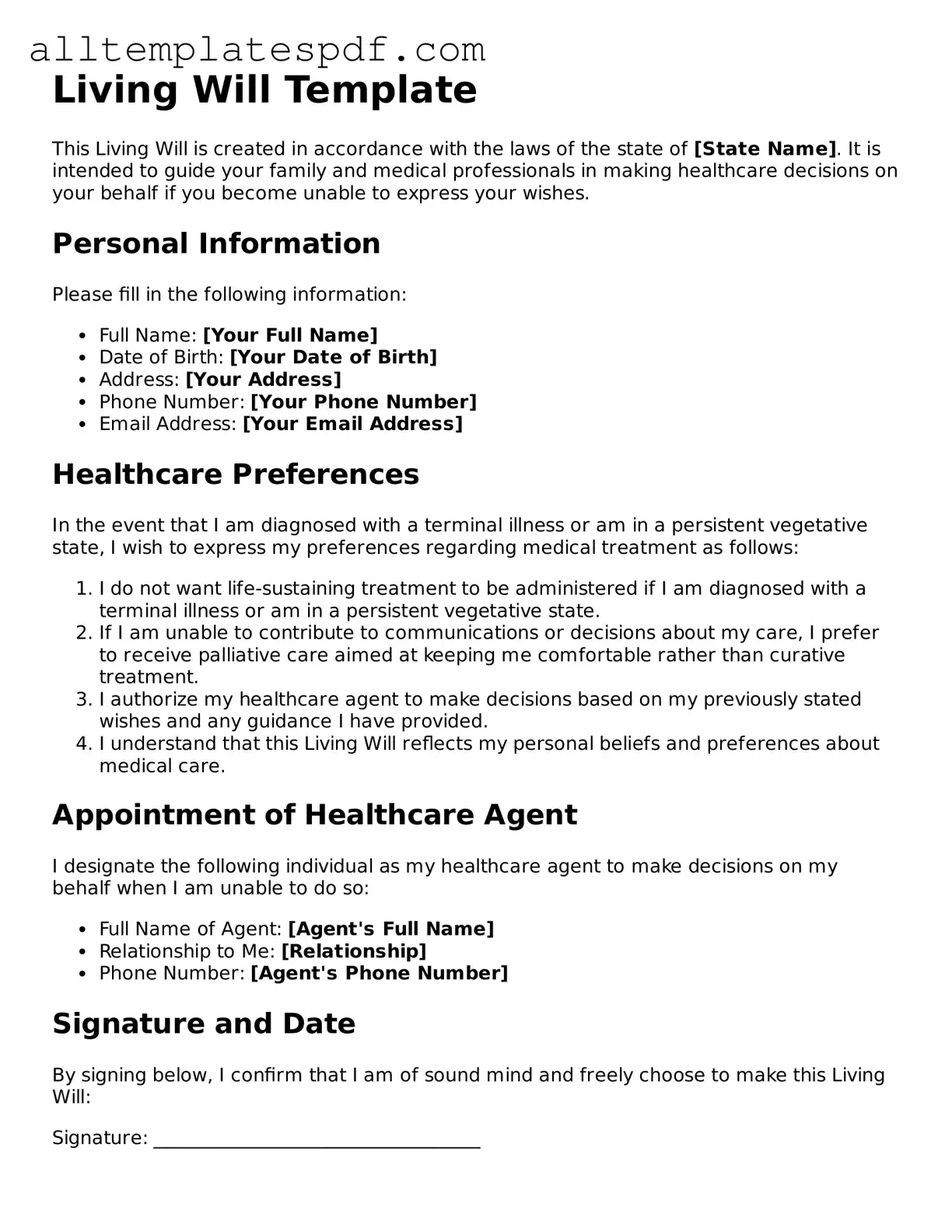Filling out a Living Will is an important step in ensuring your healthcare wishes are respected. However, many people make mistakes that can lead to confusion or even disputes. One common error is not being clear about medical preferences. Vague language can create uncertainty for healthcare providers and family members. It’s crucial to specify exactly what treatments you do or do not want.
Another frequent mistake is failing to update the document. Life circumstances change, and so do medical preferences. Regularly reviewing and revising your Living Will ensures that it accurately reflects your current wishes. Neglecting this step can lead to decisions being made that no longer align with your values.
Many individuals also overlook the importance of having witnesses or a notary. Some states require signatures from witnesses to validate the document. Without proper signatures, your Living Will may not hold up when needed. Always check the requirements in your state to ensure compliance.
People sometimes forget to discuss their Living Will with family members. Open communication can prevent misunderstandings and ensure that everyone is on the same page. When loved ones are informed of your wishes, they are better equipped to advocate for you during difficult times.
Another mistake is assuming that a Living Will covers all aspects of healthcare. While it addresses end-of-life decisions, it may not encompass other medical situations. Consider discussing your broader healthcare preferences with your doctor to ensure all bases are covered.
Some individuals make the mistake of using outdated forms. Laws and regulations can change, making it essential to use the most current version of the Living Will form. Using an outdated document may lead to complications when it’s time to enforce your wishes.
Additionally, people often neglect to designate a healthcare proxy. A Living Will outlines your wishes, but having someone to make decisions on your behalf can be just as important. Choose a trusted person who understands your values and can act in your best interest.
Lastly, many fail to keep copies of their Living Will in accessible locations. Storing the document in a safe place is important, but it should also be easily reachable by family members and healthcare providers. Providing copies to your doctor and loved ones ensures that your wishes can be honored when the time comes.
